On December 25, 2021, after several delays, the James Webb telescope was launched into space. It is mostly known to the general public as the most expensive instrument that mankind has ever launched into space. But in fact, its price is only a reflection of its incredible capabilities, given by modern technologies.

The dream of a perfect telescope coming true
A telescope is a device that collects light from a large area in such a way that we see distant objects as if they were much closer. There are a large number of designs of these astronomical instruments, but in all of them the ability to zoom in on an object is determined by the diameter of the mirror or lens that collects the light. Therefore, the 19th and 20th centuries were the ages of the pursuit of size.
But in 1992, after the launch of Hubble, it turned out that there is an exception to this rule. Because a telescope with a mirror diameter of only 2.4 meters gave better images of distant objects than the largest ground-based instrument at the time, which had this parameter of as much as 6 meters. The reason was the lack of atmosphere and gravity, which distorted both the light and the structure of the device itself.
For all its revolutionary nature, Hubble was a far from perfect telescope. Small and with an operating range mostly in the visible spectrum, it could not take full advantage of its orbital position. More and more sophisticated instruments were sent into space one after another, but the development of a truly ideal space observatory began only at the end of the 1990s.
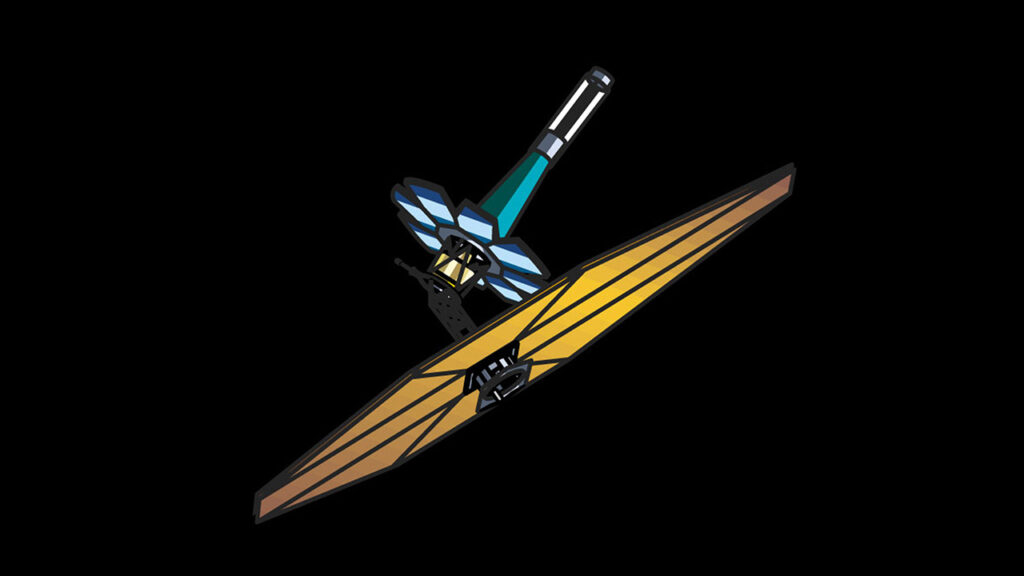
It lasted more than 20 years. After all, the ideal astronomical instrument dreamed of by scientists not only had the size of a tennis court, but also required the embodiment in metal of technologies that had not been used in space before. Actually, the launch of the telescope was delayed for so long precisely because the engineers had to build and refine new amazing devices one by one. And there are many of them on this spacecraft. So, it is worth talking about how each of them is designed and what it can do.
James Webb segmented mirror
The most important and most complex part of the design of the James Webb telescope is its mirror. It was this that frayed the engineers’ nerves the most. Usually, the device for collecting light on such instruments has the shape of a round plate, in the center of which there is a hole where the radiation must eventually go.
However, the mirror for the new telescope had to be 6.5 meters in diameter. And if it were made in one piece, it would not only be too big for any launch vehicle, but it would simply weigh too much.
Therefore, the engineers made a “plate” of 18 separate mirrors, each of which has a hexagonal shape and is mounted on a common frame. Such a decision allowed not only to reduce the weight of this structural element, but also to make three sections on one side and three sections on the other side foldable, so that the size of the telescope on the launch site could be reduced.
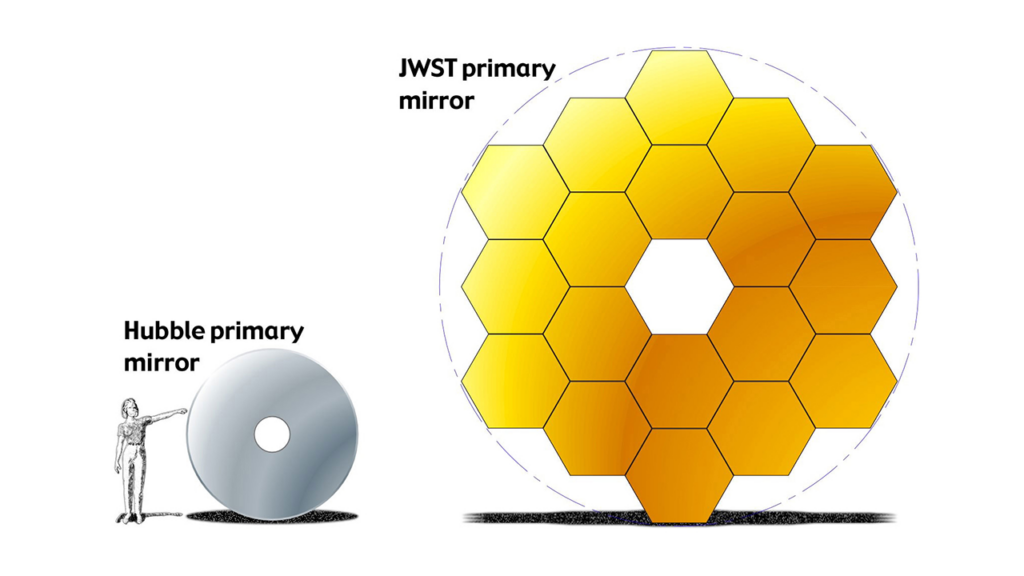
Each of the hexagons is made of the extremely light and strong beryllium metal and polished to a level that even the best household mirrors can’t rival with. Thanks to this, one element weighs only 20 kilograms, despite the fact that its size from edge to edge is as much as 132 centimeters.
Adaptive optics and auxiliary mirror
Each of the 18 mirrors is equipped with seven drives. They act as a whole and are able to move the mirror to the side by several millimeters, move it forward or backward or provide its tilt. At the same time, the mirror can be positioned with an accuracy of 140 nanometers. This is about 350 times less than the thickness of a human hair.
This is done so that flat mirrors work together better than a perfect parabolic mirror. Such a system is called adaptive optics and it allows you to finely adjust to each object of observation. Thanks to it, James Webb’s position is never unfit for shooting.
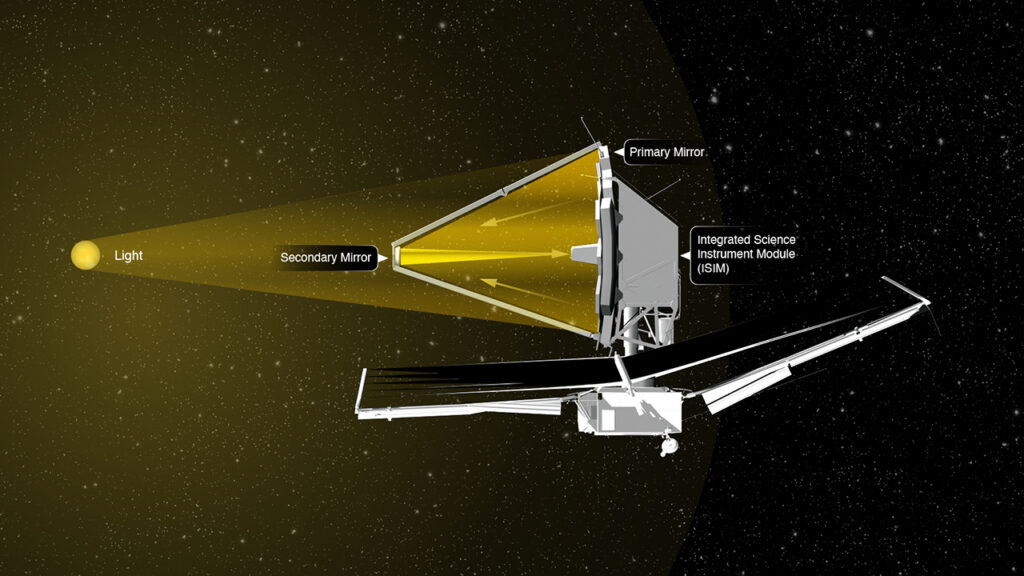
However, it is not enough to reflect the rays from the main reflecting surface to one point. It is still necessary to direct them to the middle of the hole, where the main tools are waiting for them. And this work is performed by the secondary mirror. It is located on the bars in front of the primary one and has a diameter of 74 centimeters, that is, about the size of a small table in a cafe.
At the same time, the secondary mirror has its own system of drives that can change the angle of its inclination. All the mechanics of the primary and secondary mirrors work together and are able to change their position many times per second to obtain a sharper image.
But that’s not all. After the focused rays enter the hole of the main mirror, they are reflected two more times from the surfaces of the device, which should rid the image of distortions. And only after all this the light gets on the main observation devices.
A near-infrared camera
The James Webb telescope does not operate in the visible spectrum. More precisely, it embraces only a little from the red region of the spectrum, but mainly works in the near and mid-infrared ranges. This is done due to the fact that the long waves of this region of the spectrum are much less filtered out by interstellar dust, so very bright but distant objects are most clearly visible precisely at this wavelength. The rest of the spectrum is not workable for the equipment.
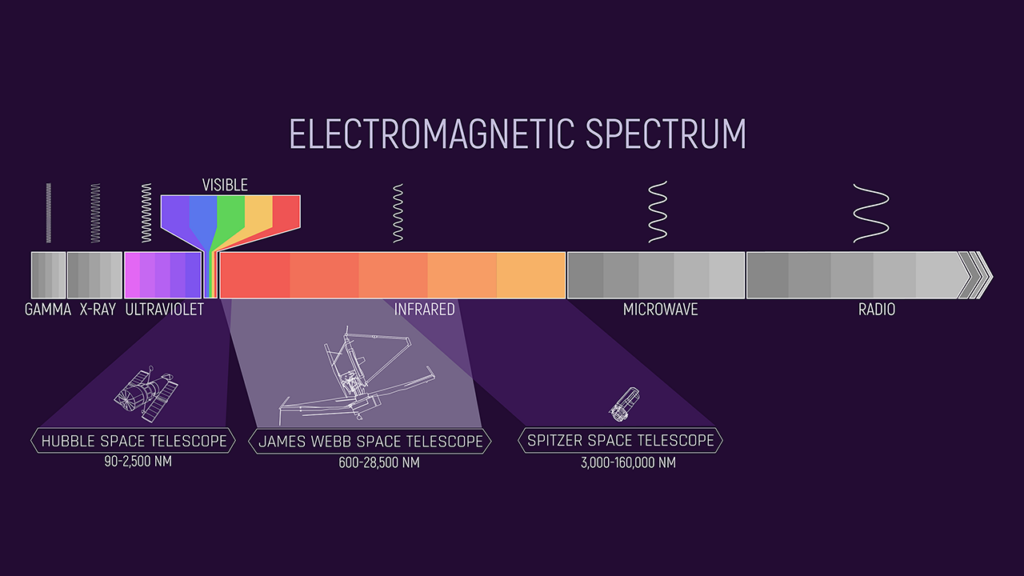
The main instrument of the new space observatory, which works in the near range, is called the Near-Infrared Camera (NIC). It is a set of two CCD matrices, each for its wavelength, a set of filters, the combination of which with matrices expands their capabilities, a prism and a set of coronagraphs.
The prism allows the camera to work as a simple spectrograph, that is, to study the absorption and emission lines of objects and determine their chemical composition. And a coronagraph is a camera mask that can be used to cover a star, for example, and see the planets around it.
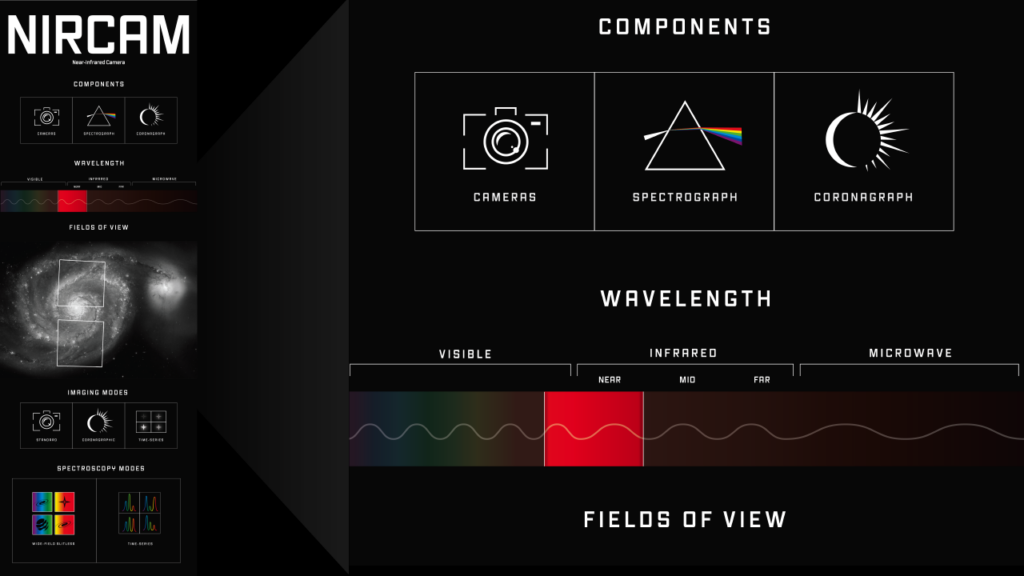
What can the infrared camera of the James Webb telescope do?
One of the main tasks of James Webb is assigned to the NIC. This camera is expected to discern the first stars and galaxies that shone in the universe just a few tens of millions of years after it was formed. We still know very little about this era, and we can count on new scientific articles, based on James Webb’sobservations, starting with “scientists have revealed the secret…”
The second task facing the NIC is the study of the galaxies around us. For nearest of them, the telescope must determine what type of stars and what age they consist of. For further ones, it should investigate the red shift — the shift of spectral lines into the red region due to the movement of these objects away from us.
In our own Galaxy, an infrared camera should study young stars. Perhaps thanks to this, we will learn more about how planetary systems like ours form. Which James Webb, by the way, will also explore. Here it will concentrate on Kuiper belt objects. Although over the past 30 years we have already discovered hundreds of objects on the outskirts of Solar System, whose diameter exceeds 100 km, there may be many more unknown dwarf planets there. And it is the NIC with its incredible sensitivity that can find them even at distances measured in hundreds of astronomical units.
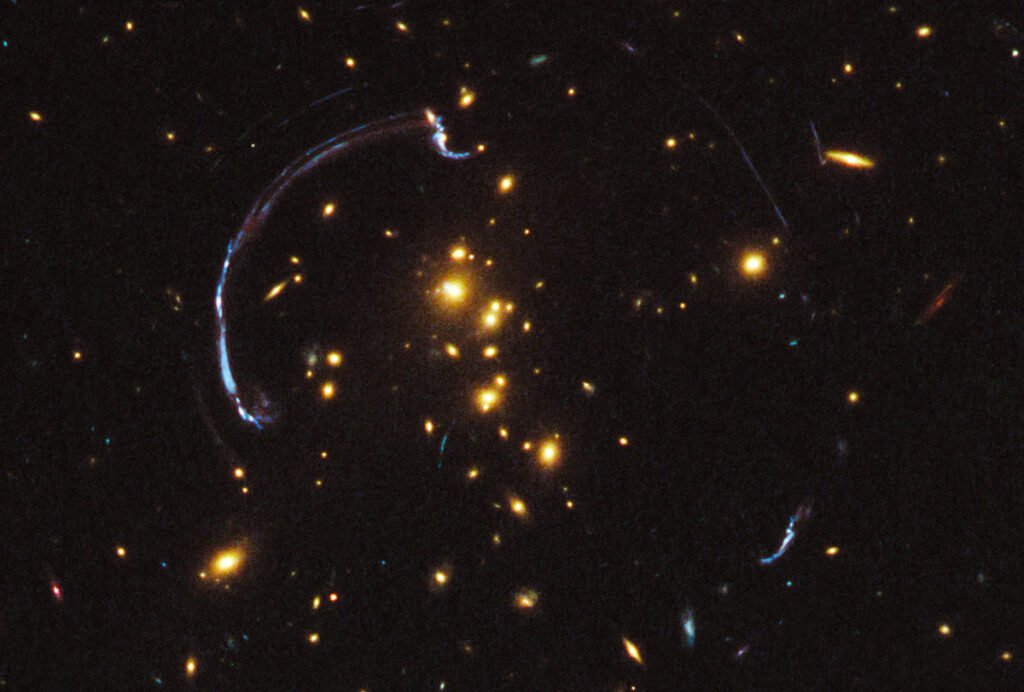
Finally, it is the James Webb’s primary camera that will track gravitational lensing in intergalactic space. This effect manifests itself in the fact that light from some source, such as a galaxy, can be deflected by the gravity of some massive but invisible object. This is how scientists detect traveling black holes within our Galaxy. And now scientists hope to find something much more interesting — dark matter. So another task of the near-infrared camera will be to compile a map of this exotic component of the universe.

